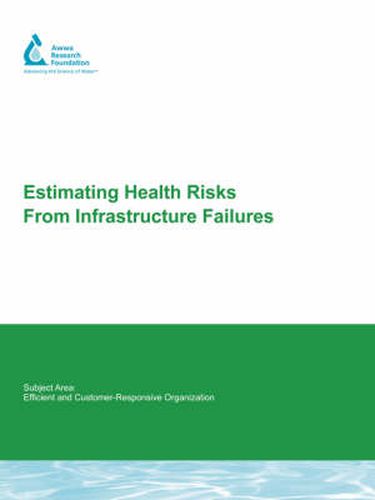Readings Newsletter
Become a Readings Member to make your shopping experience even easier.
Sign in or sign up for free!
You’re not far away from qualifying for FREE standard shipping within Australia
You’ve qualified for FREE standard shipping within Australia
The cart is loading…






Health risks from infrastructure failures are not well understood, despite the potential widespread introduction of chemical, microbial, and physical contaminants, as well as service disruptions. Public health effects due to distribution infrastructure failures are the concern and responsibility of the local water utility, the health department, community medical care providers, and in special circumstances, emergency first response agencies. While the water utility is responsible for safe water, including the operation and maintenance of distribution infrastructure, other agencies including public health regulators, medical practitioners, and first responders (e.g., police, fire, others) also play a pivotal and active role when dealing with the impacts of infrastructure failures on the community. All agencies involved with some aspect of public health protection from infrastructure failures acknowledged that the true extent of health effects, while not yet well known or characterized, required a collaborative, interagency approach.
The study identified methods to develop future collaborative efforts, which included improved understanding of the relationships and outcomes between infrastructure failure events and measured health outcomes, as well as the need to develop improved tools for the detection and monitoring of these events and community effects. This includes the need to develop/refine collaboration for interagency surveillance, response, and mitigation efforts for infrastructure failures. The study identified ways to improve interagency communication as well as potential opportunities for cross-training to improve understanding between stakeholders and to develop better collaborative relationships and programs.
$9.00 standard shipping within Australia
FREE standard shipping within Australia for orders over $100.00
Express & International shipping calculated at checkout
Health risks from infrastructure failures are not well understood, despite the potential widespread introduction of chemical, microbial, and physical contaminants, as well as service disruptions. Public health effects due to distribution infrastructure failures are the concern and responsibility of the local water utility, the health department, community medical care providers, and in special circumstances, emergency first response agencies. While the water utility is responsible for safe water, including the operation and maintenance of distribution infrastructure, other agencies including public health regulators, medical practitioners, and first responders (e.g., police, fire, others) also play a pivotal and active role when dealing with the impacts of infrastructure failures on the community. All agencies involved with some aspect of public health protection from infrastructure failures acknowledged that the true extent of health effects, while not yet well known or characterized, required a collaborative, interagency approach.
The study identified methods to develop future collaborative efforts, which included improved understanding of the relationships and outcomes between infrastructure failure events and measured health outcomes, as well as the need to develop improved tools for the detection and monitoring of these events and community effects. This includes the need to develop/refine collaboration for interagency surveillance, response, and mitigation efforts for infrastructure failures. The study identified ways to improve interagency communication as well as potential opportunities for cross-training to improve understanding between stakeholders and to develop better collaborative relationships and programs.